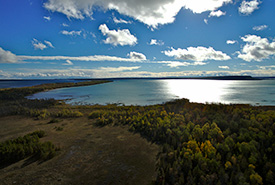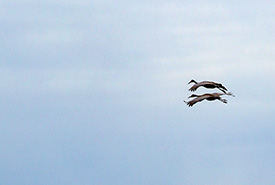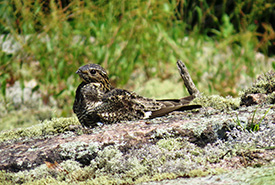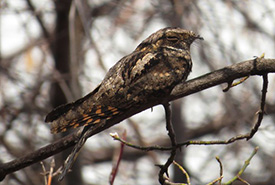High notes in the bur oaks: Songs of the Manitoulin savanna

Manitoulin Island, ON (Photo by Steve Maxwell)
A bouncing ping-pong ball, buzzes, bugles and booms: these are the sounds of the savanna. For someone unaware, the symphony of bur oak savanna on Ontario’s Manitoulin Island may seem unfamiliar. For many species of grassland birds, however, this environment is home.
Birdsong speaks volumes. From “I’m over here” to “this is mine” or “look out!”, birds are conveying a message. What can we learn if we listen?
I joined the Nature Conservancy of Canada (NCC) in 2022 as an assistant conservation biologist, but my research background is in bioacoustics. In this former life, birdsong was the lens through which I looked at the natural world. Though sound became a solution to academic curiosities, applying this approach to the world of conservation runs into an issue of scale. Ideally, we would record everywhere simultaneously and uncover where species of interest are and what they might be up to. But we can’t be everywhere at the same time. Or can we?

Sandhill cranes in flight, ON (Photo by Mhairi McFarlane/NCC Staff)
Traditional survey methods put a trained observer in the field who notes the birds they hear. But people can make mistakes and maybe aren’t the happiest about getting up at 1 a.m. and hiking out to a remote field site. Thanks to advances in the bioacoustics field, we can leverage technology to our advantage with autonomous recording units.
A single recorder can collect thousands of hours of bouncing, bugling and buzzing. It also doesn’t mind the rain, wind or time of day and is happy to sit in remote locations for months on end, if needed. The only problem? A mountain of data: gigabytes of audio files. It would seem like maybe we’ve traded one problem for another. How do we convert ones and zeros into swans and sparrows?

Common nighthawk (Photo by NCC)
We again leverage available technology. Using artificial intelligence, we can process this data in an afternoon, automatically detecting and identifying species. After deploying these autonomous recording units and running the software in 2023, our surveys pulled names from the air of the Foxey Bur Oak Savanna. The bouncing ping-pong ball song of the field sparrow, the droning buzzes of a clay-coloured sparrow, the wild bugles of sandhill cranes — synonymous with Manitoulin itself — fill our recordings.
The most vocal species of the Foxey savanna? A predator usually hidden during the day, coming out at dusk to feed. A combination of sounds were detected: first, loud nasal “PEENT” calls ripped through the evening air, followed by a loud booming sound, similar to humming “VRrrrt” loudly through closed lips. These are the sounds of common nighthawk, a member of the nightjar family, so named for the loud jarring sounds they make as night falls. Another member of this vocal family, eastern whip-poor-will, was also detected singing its namesake “whip-pooorawhell” song among the bur oaks into the pre-dawn.

Eastern whip-poor-will (Photo by Paul Prior, Creative Commons)
These species are aerial insectivores (birds that feed on insects while flying), dependent on the productivity of the savanna as foraging habitat. Both common nighthawk and eastern whip-poor-will are species at risk, nationally and provincially. The reason for their decline is due primarily to the loss of spaces like the Foxey Bur Oak Savanna.
The Foxey Bur Oak Savanna, part of the Manitoulin Island Archipelago Natural Area, is a candidate Area of Scientific and Natural Interest and a Key Biodiversity Area vital to grassland birds. It hosts some of the most southern lekking (mating) sites for sharp-tailed grouse in Ontario. Spaces like this are becoming increasingly rare, and the disproportionate decline of grassland bird species reflects this loss.
By leveraging technology, we can accelerate conservation of these important habitats and ensure the grassland chorus continues. The message we’ve received loud and clear from the birds: the savanna needs our help.


